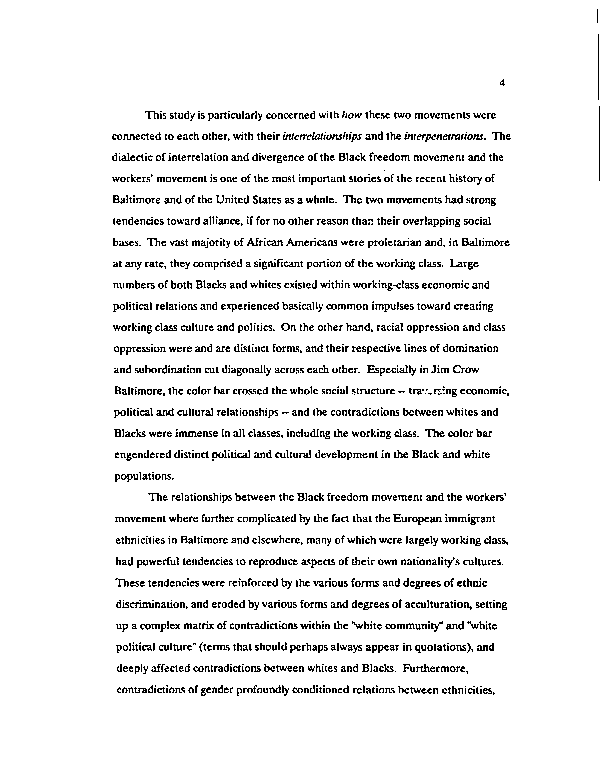|
This study is particularly concerned with how these two movements were
connected to each other, with their interrelationships and the interpenet rat ions. The
dialectic of interrelation and divergence of the Black freedom movement and the
workers* movement is one of the most important stories of the recent history of
Baltimore and of the United States as a whole. The two movements had strong
tendencies toward alliance, if for no other reason than their overlapping social
bases. The vast majority of African Americans were proletarian and, in Baltimore
at any rate, they comprised a significant portion of the working class. Large
numbers of both Blacks and whites existed within working-class economic and
political relations and experienced basically common impulses toward creating
working class culture and politics. On the other hand, racial oppression and class
oppression were and are distinct forms, and their respective lines of domination
and subordination cut diagonally across each other. Especially in Jim Crow
Baltimore, the color bar crossed the whole social structure - traversing economic,
political and cultural relationships - and the contradictions between whites and
Blacks were immense in all classes, including the working class. The color bar
engendered distinct political and cultural development in the Black and white
populations.
The relationships between the Black freedom movement and the workers'
movement where further complicated by the fact that the European immigrant
ethnicities in Baltimore and elsewhere, many of which were largely working class,
had powerful tendencies to reproduce aspects of their own nationality's cultures.
These tendencies were reinforced by the various forms and degrees of ethnic
discrimination, and eroded by various forms and degrees of acculturation, setting
up a complex matrix of contradictions within the "white community" and "white
political culture" (terms that should perhaps always appear in quotations), and
deeply affected contradictions between whites and Blacks. Furthermore,
contradictions of gender profoundly conditioned relations between ethnicities,
|

